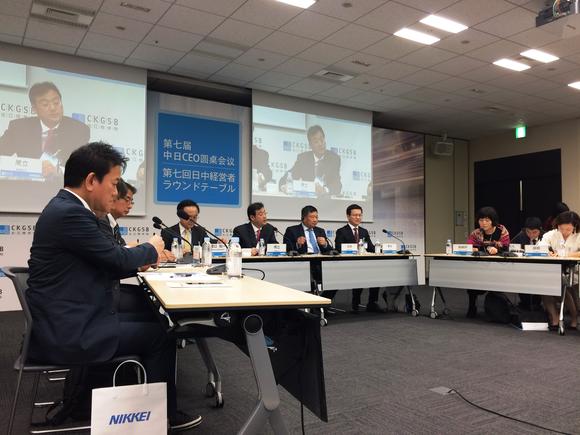Nikkei Asian Review – Oct 18, 2016 – TOKYO — China’s entertainment industry is all about the 21-year-old. That is the average age of moviegoers. It is a narrow age bracket but it represents the core customer; one that speaks with a singularly loud voice.
The next generation of Chinese 21-year-olds — those born in the 2000s — will be a different bunch and could offer Japan’s animation industry an unprecedented opportunity to blitz into the Chinese market, which has so far been dominated by Disney, Hollywood and South Korea, according to a panel discussion held in Tokyo on Tuesday.
“Those that will be 21 five years from now grew up watching Japanese animation and they understand Japanese culture and trends in ways that those born in the 1980s never have,” said Hu Ming, who recently stepped down from vice president of Chinese film producer and distributor Huayi Brothers Media Corp.
Hu was speaking at the Seventh Japan-China CEO Roundtable, hosted by the Cheung Kong Graduate School of Business, China’s leading business school, in collaboration with Nikkei Inc.
Yang Xiaoxuan, vice president of iQiyi, China’s largest online video site, said that when her company released “Seisen Cerberus” — a Japanese animation series based on a role-playing mobile game — in China, it was watched by 140 million people in the first three months. “The animation market in China will be at least worth 20 billion yuan ($3 billion),” she said.
Yang called for Sino-Japanese cooperation in anime production. “Japan has over 50 companies that specialize in animation, and they are mostly gathered in Tokyo,” she said. “Rather than outsourcing to Chinese companies scattered in Beijing, Shanghai and Guanzhou, it may be more reasonable to outsource to Tokyo.”

Japanese anime “Seisen Cerberus” drew 140 million views in its first three months on China’s online video site iQiyi. © Gree
Yuichi Takahashi, CEO and president of Japanese broadcaster TV Tokyo Holdings agreed, saying Japanese and Chinese producers should collaborate from the very beginning of content production.
Takahashi touched on “Mr. Osomatsu,” an unexpected hit anime series that aired in Japan from October 2015 to March 2016. “It is a story about identical sextuplets, all unemployed, but each with a different personality,” Takahashi said. “The detailed depiction of the inner character was very popular in Japan and could be duplicated in China, although we would need to understand family matters unique to China, such as the one-child policy.”
The discussion came with China’s once sky-rocketing box office having cooled — what used to be 30% growth is now 10% growth — and with Japanese content producers looking abroad for growth potential.
Ren Yi, the China-born, Japan-raised executive officer of Japanese mobile game giant DeNA, looked to anime’s future by offering a comparison to today’s iPhone.
“Just as an iPhone is designed in California and assembled in China with mainly Japanese components,” he said, “anime fit for a global audience should defy national borders and be produced under the best value chain.”

